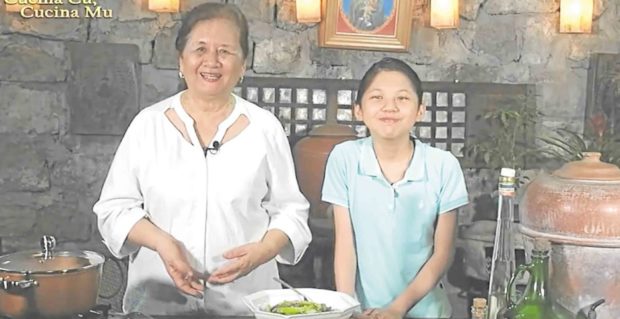
Before the pandemic forced her to close her small restaurant in Mexico, Pampanga, Lillian Borromeo prepared traditional dishes and gave short talks on their origins to a steady stream of inquisitive guests. The sociable septuagenarian, fondly called “Atching” Lillian (atching is a Kapampangan term of respect), was proud to talk about her province’s rich culinary heritage, and became a frequent guest on local TV shows where she regaled hosts and viewers alike with her encyclopedic knowledge.
The lockdowns were a big blow because they halted all nonessential businesses. She spent months indoors until she realized she was becoming more and more forgetful.
“Nag-uulyanin daw ako,” Borromeo told Lifestyle in a phone interview. “My adult kids, one of whom is a doctor, told me I should find an activity to busy myself with.”
They knew how much their mother enjoyed meeting and talking with people. Since face-to-face meetings were forbidden, they came up with an idea that seemed perfect for her.
“One day, they told me to get dressed and put on makeup. I thought they were taking me out,” Borromeo said.
Instead, they had set up a space at home where she could do short food demos that would be recorded and uploaded on her very own YouTube channel.
“Cucina cu, cucina mu” (From my kitchen to yours) has only been on YouTube for a few months but there are already a dozen videos of Borromeo cooking everything from Burung Asan (fermented rice) to Tocino del Cielo (egg yolk-rich sweets similar to creme caramel).She is joined in a couple of them by her school-age granddaughter Julia, who hands the ingredients to her lola and listens to her stories.
We learn that Paksing Demonyo, a dish made of fish and vegetables stewed in vinegar and aromatics, was named after one cobbled together by a poor farmer’s wife for her family.
“The Devil who had been spying grew jealous because even if the family was poor, she was still able to come up with a delicious meal. The Devil ate all the fish thinking the man would get angry with his wife, but the family still ended up enjoying the meal,” Borromeo told her apo.
Cooking and telling stories
Watching her now, it’s obvious she has missed cooking and telling her stories. The recorded food demos allow her to jog her memory and use her motor skills even in her makeshift kitchen. On a well-worn wood table using a one-burner butane stove, Borromeo reminds viewers why she is known as “the guardian of Kapampangan recipes.”
Unlike other chefs who guard their recipes, she freely shares what she knows, always making it a point to give credit where it is due. Borromeo is an instinctive cook—adding a dash of this, a pour of that—but always coming out with finished products that remind Pampangueños of home.
“We grew up eating her food, especially her Panecillos de San Nicolas and her tamales. That’s why she was one of the first food makers I included in the roster when I put up Carmen & Consorcia last year,” said stylist-turned-online-food-seller Noel Manapat.
The St. Nicolas cookies made of arrowroot flour and formed in 100-year-old wooden molds are based on a 300-year-old recipe. They are traditionally given to those who are sick, or during a time of calamity, like the one we’re experiencing now.
“Customers give it to their friends who are in their 90s and who still remember eating the cookies as children. There are also young mothers who give the cookies to their kids. It’s heartwarming to know that people want to share their heritage with the younger generation,” Manapat said.
For Borromeo, it’s all in a day’s work. She’s back in her element, sharing her know-how and reaching out to a broader audience. INQ